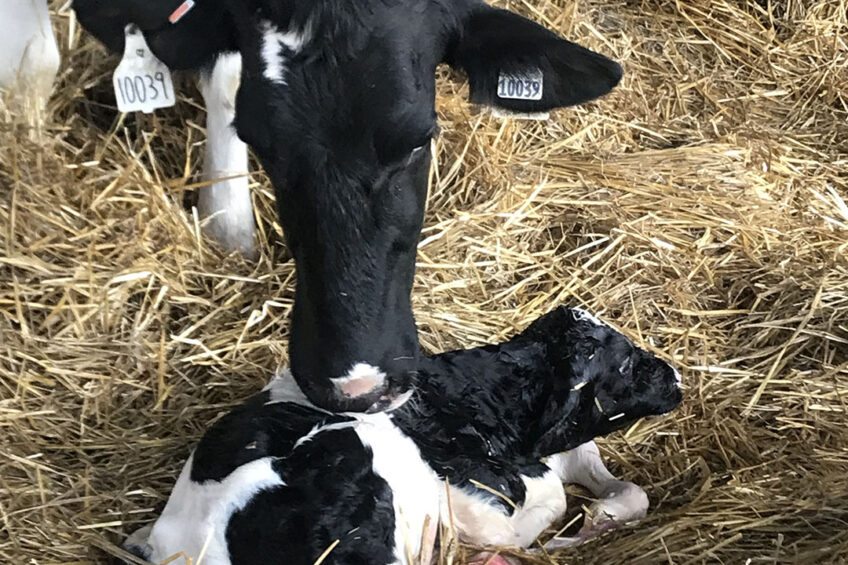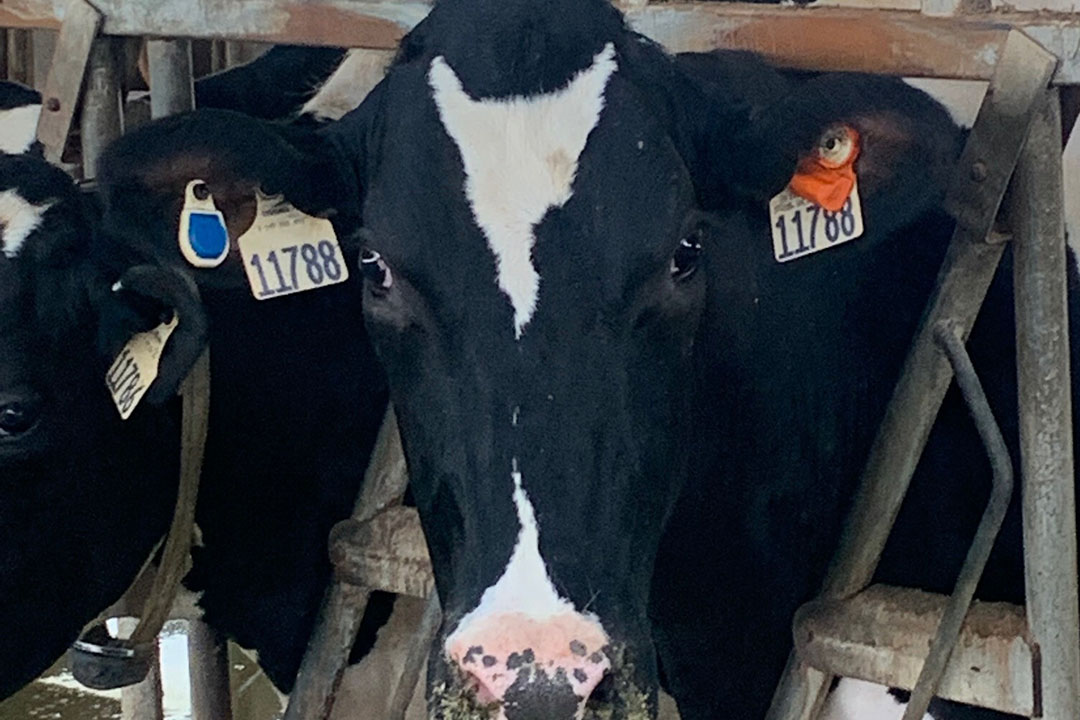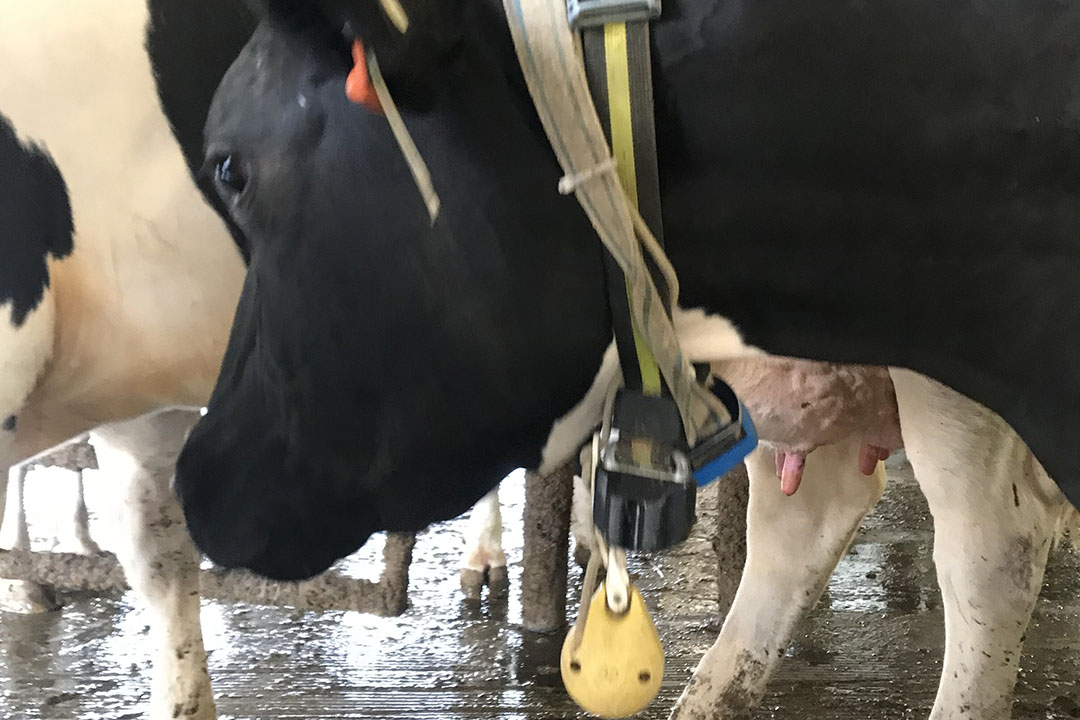Major US project: Better cow breeding for feed efficiency

As you read this, thousands of lactating Holstein cows across several states are providing continuous data being analysed to improve breeding for higher feed efficiency in the US and beyond.
Higher feed efficiency, which means that less feed is needed to produce the same amount of milk, is obviously a win for everyone when it comes to the reduced environmental impact, but also because this helps reduce feed costs for farmers.
Unrivalled volume of cow performance data collected
Up to this point, breeding for higher feed efficiency (attaining reliable ‘genomic breeding values for this trait) has been hampered by a lack of enough, reliable data. That’s why a massive study based at several US universities was initiated about 5 years ago. Not only is the number of cows unprecedented, but this study also stands out in that large amounts of cow performance data of many types is being gathered through automated sensors.
Support for the project is coming from the Foundation for Food & Agriculture Research (FFAR), a government-affiliated agency which builds public-private partnerships to fund research projects that help solve critical food and agriculture challenges, complementing the research agenda of the US Department of Agriculture (USDA). In this case, FFAR awarded Michigan State University a US$1 million grant, matched by another US$1 million from the Council on Dairy Cattle Breeding.
Dr Michael VandeHaar at Michigan State is leading the study with a core group of 6 geneticists and 4 nutritionists (along with others) based at the University of Wisconsin, Iowa State University, University of Florida and USDA Animal Genomics Improvement Laboratory.
The project will result in more reliable genomic predictions for feed efficiency, along with the eventual development of a feed intake index that uses sensors to predict feed intake on individual cows. The team will also determine if genomic predictions of feed efficiency can decrease methane emissions.
Data collection
Because the focus is on feed efficiency, the data being gathered obviously includes individual cow feed intake and milk production, but also body weight – and from sensors, body temperature, feeding behaviour and locomotion data. Milk produced by study cows will also undergo analysis.
“We currently have feed intake, body weight and production data from 8200 cows, milk spectra data from 3250 cows, body temperature data from 1200 cows and activity (locomotion and feeding behavior) data from 1800 cows,” says VandeHaar.
Last year, the team also met its goal for genotyping all new cows. They also measured methane emissions for 147 cows, 3 times their targeted number.
The diets of the study cows are typical commercial ones and vary across the participating farms. All cows are 2 years or older.
Although the study is going well, it is not without challenges. For example, availability of cows to include in the research has been a hurdle. In addition, VandeHaar says collecting quality data on feed intake of individual lactating cows and adding to that to the database is expensive and time-consuming.
Adding to existing dairy cow data
This project builds on a database created over a dozen years ago, when Michigan State scientists, in a USDA-National Institute of Food and Agriculture study, found breeding for more feed-efficient cows could save the US dairy sector $540 million USD a year with no loss in milk production.
“We developed a database of 3950 US cows in that project,” explains VandeHaar. “Those cows each had feed intake, body weight and production data measured for at least 28 days and mostly for at least 42 days. They were also all genotyped.”

Sensor use in cow feed intake
In the current project, VandeHaar and his team are in the process of determining the value of sensors for predicting feed intake.
“Our goal was to have sensor data from a subset of the 3600 cows, mostly from Michigan State, Iowa State and University of Florida,” he reports, “and we are at 1800 so far. To date, we would say that sensors and spectral data look promising for predicting some of the differences in Residual Feed Intake (RFI, a measure of feed efficiency) among cows within a farm but developing equations that will work across farms will be difficult.”
The team has already published analyses of sensor data within stations and have started analysing data across sensor stations. And, they have started evaluating combinations of sensor phenotypes for predicting feed intake but much more work lies ahead.
Indeed, on this front at this point, it is too early to say what can be accomplished.
“We already can use a cow’s body weight, body condition score, parity and milk production to predict if she eats more or less than the other cows in her feeding group,” VandeHaar explains. “Then, if we know the average intake of the group, we could predict her intake. However, we know that some cows eat more or less than expected—that is what RFI predicts. Our hope is that data from sensors (especially activity, eating time and rumination time) and milk spectra data will add extra information that may help us predict RFI. But at this time, we just don’t know how well that is going to work.”
VandeHaar notes that if it does end up working well, companies that sell sensors will probably use this way of predicting RFI using their own sensors.
Creating equations for farm management software
He adds that “perhaps, we will be able to develop equations for farm management software so that we combine activity and rumination time with milk spectra data, genomics data, automated body weight and body condition data, and milk production as well as group intakes from TMR feeding systems to predict intake of individual cows. Those could be used to predict feed efficiency and help in making culling and breeding decisions.”
Looking forward, he and his colleagues hope to publish equations to predict feed intake of individual cows in group-fed situations to be used in culling and breeding decisions in 2024 or 2025.
Feed Saved – feed efficiency trait
Due to the first-year results of this project, in 2021 the trait known as ‘Feed Saved’ (a feed efficiency trait based on RFI and body size) was included in the Net Merit Index, one of 39 traits that have existed in the Index since that point for Holsteins.
(The Net Merit Index is a US breeding index that was created in 1994 and predicts net profit over the lifetime of the dairy cow or bull’s average daughter. VandeHaar and his team explain that it’s widely used to select sires for use on commercial farms throughout the US, and these rankings will affect Holstein genetics throughout the world long into the future.)
Boosting the total of new RFI phenotypes
Last year, the team managed to measure RFI phenotypes to match with genotypes of unique cows for 1170 cows, boosting the total of new RFI phenotypes for the project to 4200.
However, the team also noted last year that the reliability of the new Feed Saved trait is less than is desired. “Thus,” they state, “we plan to continue phenotyping as many cows as we can in year 5 (2023) to make the most of the work we have done so far to maximise effectiveness of the Feed Saved trait.”
Join 13,000+ subscribers
Subscribe to our newsletter to stay updated about all the need-to-know content in the dairy sector, two times a week.










